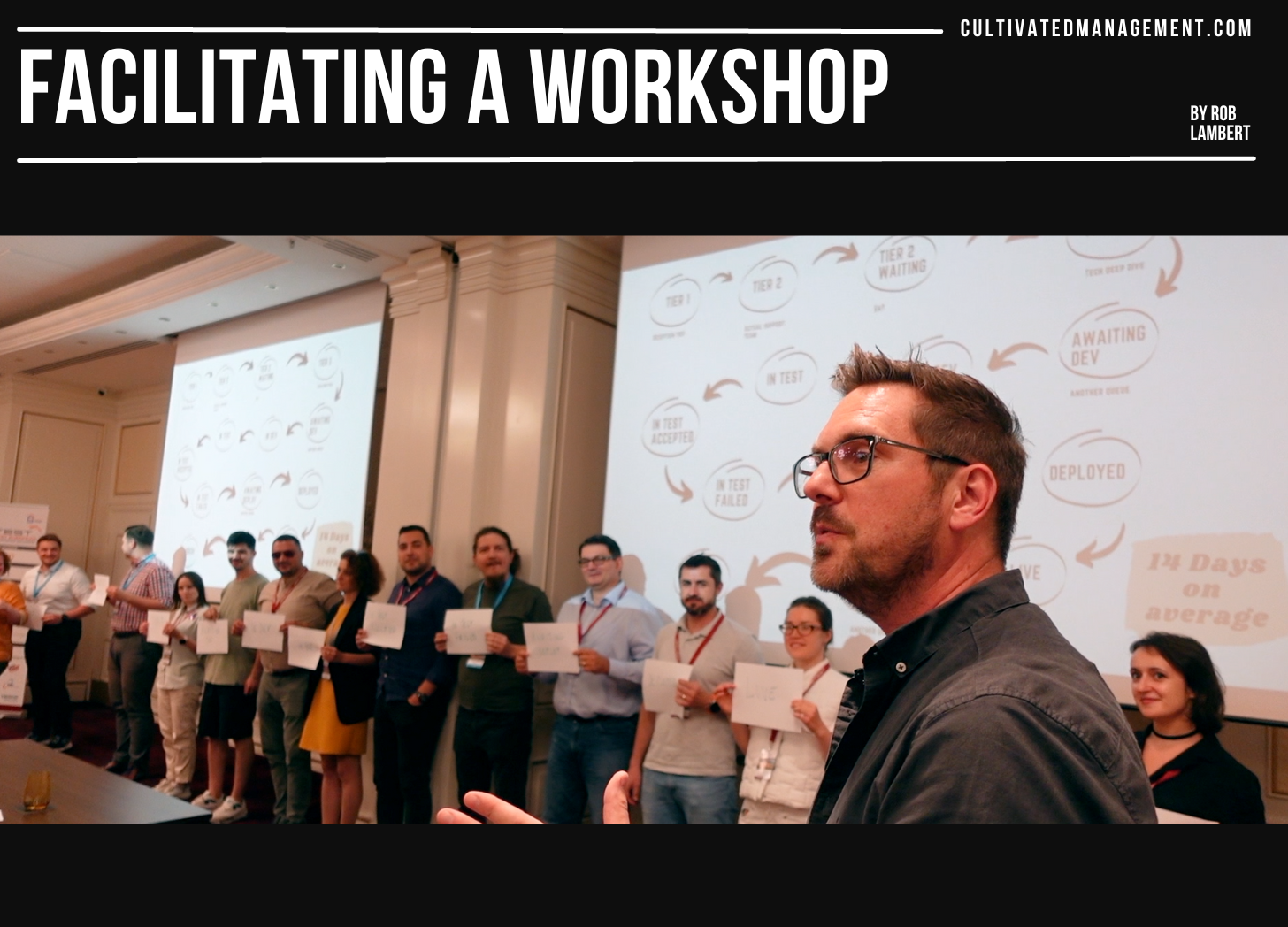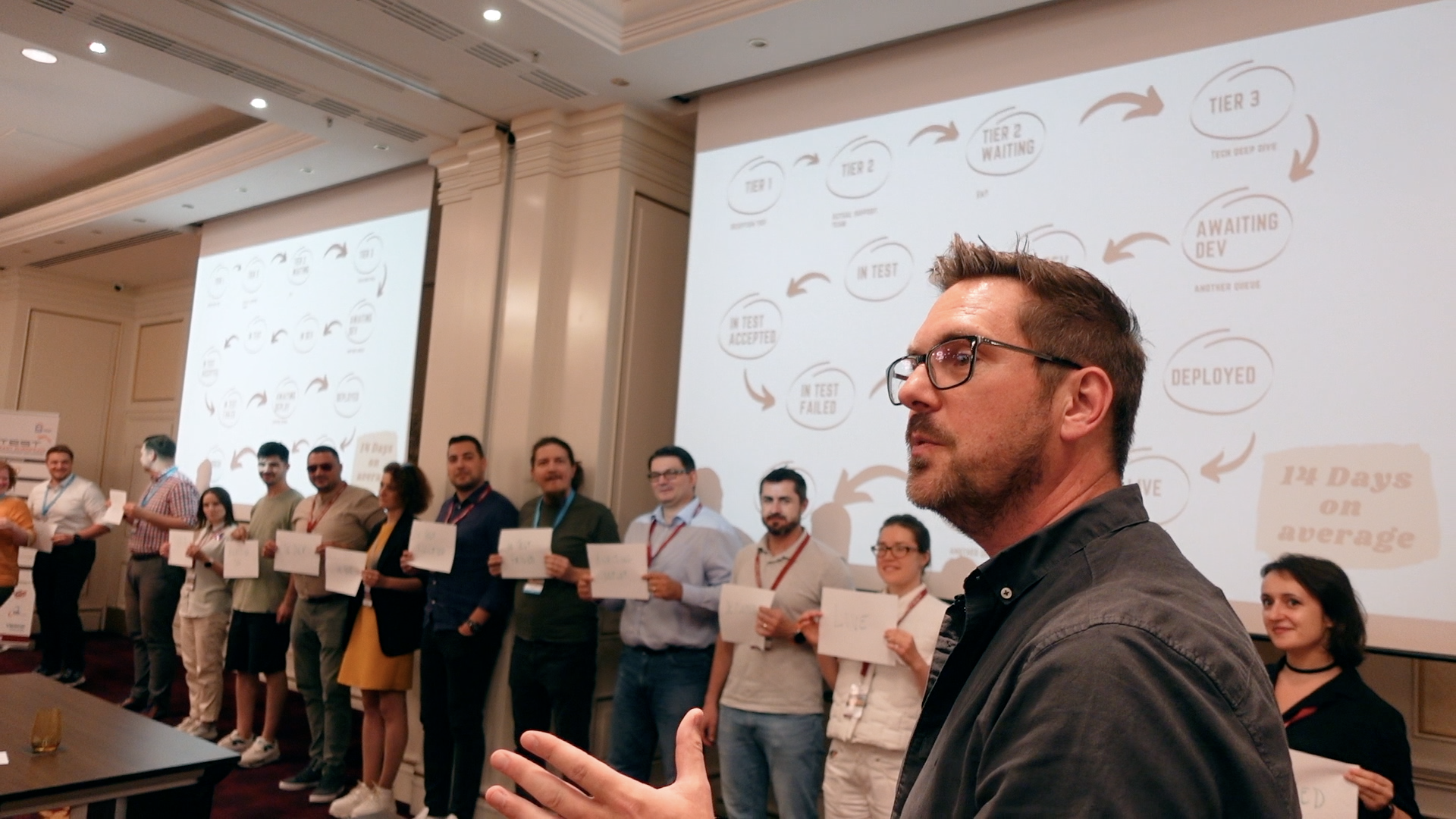11 helpful tips on facilitating a workshop or tutorial

I’ve just got back from facilitating my workshop – The 10 Behaviours of Effective Employees in Romania, to the SEETEST conference
It’s an immersive, creative workshop with hands-on practical activities where we co-learn about the 10 behaviours of effective employees.
I’ve done a free eBook before, the award-winning talk is also available and of course, this new workshop is live!
As part of the trip though, I decided to record a video explaining 11 ideas that I use to deliver award-winning tutorials / workshops.
Check out the video for behind the scenes and an explanation of the following 11 ideas:
Facilitating a workshop
Prepare and Practice – after all practice is preparation.
The audience have turned up and the courteous thing to do – is reward them for their investment.
Set constraints.
Without constraints your workshop runs the risk of being unmanageable
and therefore degrading the quality for all, as well as being a nightmare to run.
Constraints are important.
Scope the room
When you get to the venue, scope out the room to see what it’s like and if there will be any logistical problems (room layout, blind spots, etc)
You will never get it just right.
I try to ensure all workshops have a 50/50 split between interaction and solo waffling.
Some people will say they want more interaction and some will say less.
You will never get it spot on.
50/50 works for me. I also have an opening slide explaining how I will get it wrong but will try my hardest.
Prep the room.
Before the workshop begins ensure you turn up in time to prep the room.
Go easy on the social.
It can be tempting to indulge in the food and drink at conferences, but waking up with a hang-over and then having to bring the energy (point 7) can be hard.
Bring energy and enthusiasm.
The energy in the room comes from you. You set the tone, the level and it’s your job as the facilitator to lift and lower the energy as needed.
Clear instructions.
It’s important that you set clear instructions for the interactive / practical parts.
This avoids confusion, mitigates delays from questions and ultimately, ensures everyone gets the most from the practicals.
Teach something interesting.
It goes without saying that you should be teaching and sharing something interesting.
If you’re not interested in it, why should your audience be?
There will be problems.
There will be challenges and problems. Sometimes the tech won’t work, or you will have forgotten a key element for the practical, or the content may need pivoting.
The more you deal with problems, the better your toolkit becomes and the easier it is to pivot when needed.
Have fun. Not forced fun. But fun. Like proper fun.
It should be enjoyable to teach others. It should be pleasing to see the moments of learning, the tough questions, the listening, the feedback.
And there you have it. 11 core ideas. I hope you enjoy the video.
And if you’d like this workshop, or talk, at your company or event, give me a shout. I tend to only do 2 conferences per year, but happy to chat about company events.

